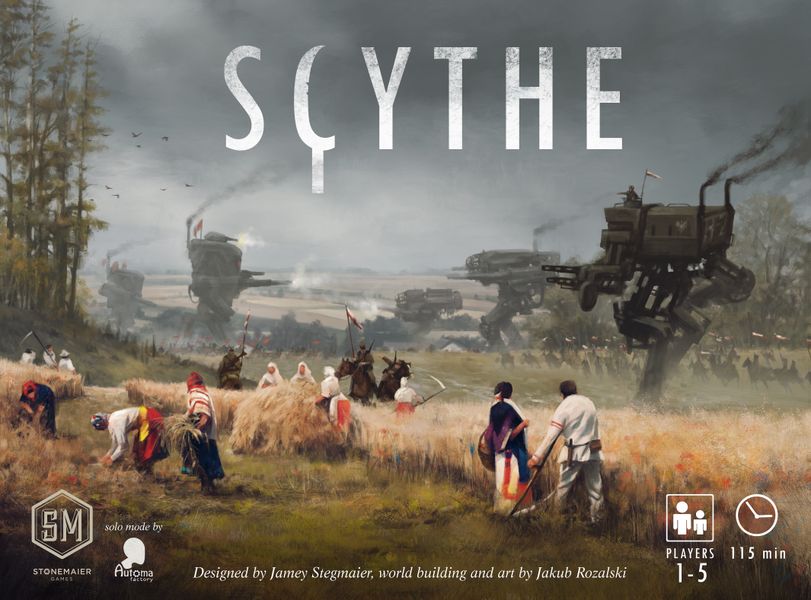Scythe (2016) Board Game
Scythe is a board game that was released in 2016 by Stonemaier Games. Designed by Jamey Stegmaier and featuring artwork by Jakub Rozalski, the game is set in an alternate history 1920s Europe, where players take on the role of factions competing for control of the land.
Game Components of Scythe
How To Setup Scythe
To set up Scythe, players lay out the board and each player receives a randomly assigned faction mat and its corresponding components. Players sit so they can reach their faction’s home base on the board. Each player also gets a random player mat, which they pair with their faction mat. The boards are two-layered, making it easy to see where components go. Players mark their starting popularity and power, and place their character on their faction’s base with two workers in adjacent hexes.
Gameplay Mechanics and Game Objective
Player Experience
Playing Scythe is a deeply strategic and immersive experience. Each turn, players select from a series of individual set actions on their player board, choosing top and bottom actions that offer different benefits and costs. The game’s complexity stems from the interactions and combinations of these actions, rather than convoluted core rules. This makes the game accessible despite its weight. The game ends when a player achieves their sixth star, but the true victory lies in maximizing end-game wealth through careful planning and resource management.
Pros
Cons
Personal Thoughts on Scythe
Scythe is ideal for experienced board game enthusiasts who enjoy strategic depth and complex gameplay. It is particularly suited for those who appreciate engine building, area control, and worker placement mechanics. The game’s unique setting and high-quality components make it a standout in the board game community. However, due to its complexity and steep learning curve, it may not be the best fit for casual or new players. With its high replayability and the option for solo play, Scythe offers a rewarding experience for those willing to invest the time to master its intricacies.
We are supported by our audience. When you purchase through links on our site, we may earn an affiliate commission, at no extra cost for you. Learn more.

